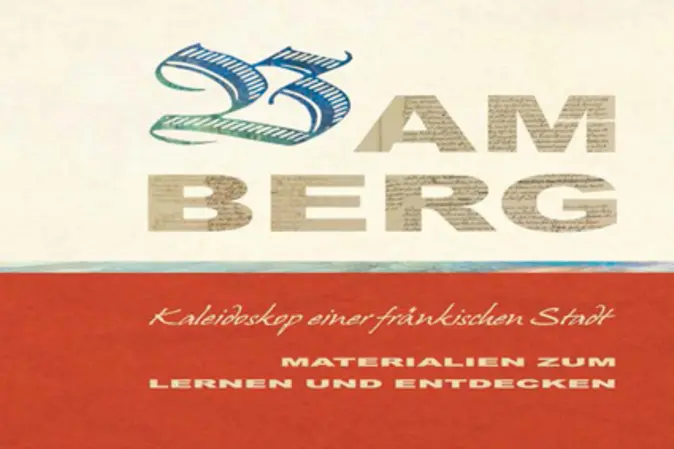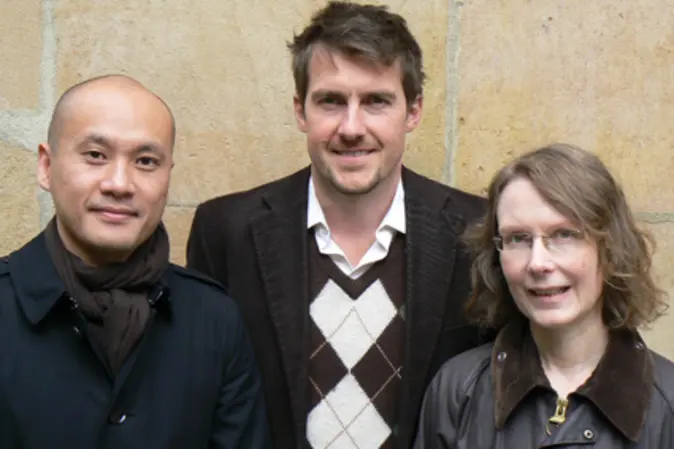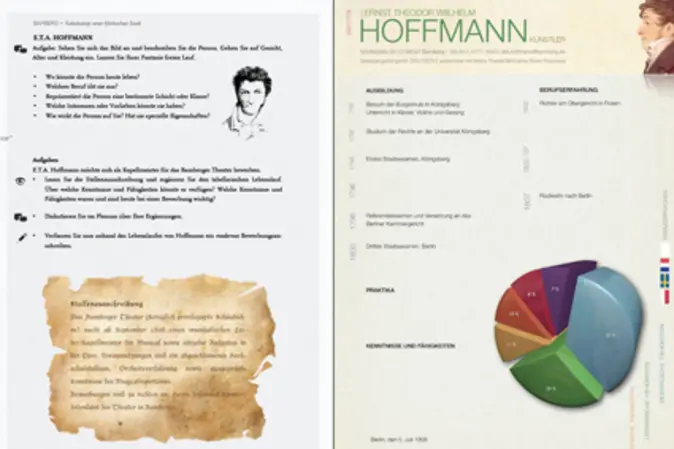The new textbook, “Bamberg – Kaleidoskop einer fränkischen Stadt”, is available in stores now. (photos: Tristan Lay/Armin Gertz/Marion Then)
The authors (photo: Ruth Knapheide)
A view inside the new book (photos: Tristan Lay/Armin Gertz/Marion Then)
The Many Sides of Bamberg
This textbook is unique, because it fills a market niche. Until now, even big German cities like Berlin or Hamburg have only been given a few pages in textbooks for German as a foreign or second language. Smaller cities like Bamberg generally aren’t mentioned at all, but Tristan Lay, the project initiator and, until late 2012, German as a foreign language instructor at the University of Bamberg, recognized the potential for such an approach after moving to Bamberg to work at the university.
Lay says, “Because I, like my foreign students, found so much to discover in the city, I got the idea to make these experiences – first in the form of a dossier – a central part of my courses.” Together with colleagues Armin Gerz and Marion Then, Lay began compiling teaching materials focused on the Franconian city and its distinctive history and culture. Like Bamberg, with its seven hills, the book is divided into seven chapters: the city of Bamberg; history; market gardeners; art and architecture; music; literature; and religion.
Kunigunde, Sandkerwa and Crooked Potatoes: Bamberg Originals
This is of course a textbook with foreign language skills at its core, but as Mr Lay stresses, it also offers students much more. He says that foreign students generally face challenges adapting to a new city because of their linguistic and cultural perspectives as outsiders. Many students find it difficult to identify with and feel at home in their new environment, but the Bamberg-specific cultural and historical information presented in this book offers students a new perspective and a unique opportunity for getting to know and better understanding the city in which they are living.
The book is focused not only on language skills, but also on helping students expand their knowledge of the city. They learn, for example, that you can order “Bamberger Hörnla” not only at a bakery, but also at a vegetable market, with very different results! They also learn about the legend of Kunigunde and find out about the annual Sandkerwa festival. Marion Then, lecturer for German as a foreign language, stresses that “all of this helps to give our foreign guests a better understanding of the city in which they live. In this way, they begin to feel at home on many different levels.”
Increasing Cultural Awareness
The textbook employs various methods and media (including an MP3-CD with listening comprehension exercises in the local Fanconian dialect!) to offer students a modern learning experience, and its region and city-specific information truly sets it apart from other more traditional resources. The idea is that students not only learn about the city of Bamberg, but also about the people who live here and their unique mentality.
“The modules presented in the book are comprised of exercises that are meant to help students better understand the Germans and comfortably ease into their new experience. Bamberg should not merely be a place of academic endeavour, but also a place where students can feel at home in a foreign culture,” says Armin Gertz, the University of Bamberg’s internationalisation project staff member for “International Student Mobility.” The book’s modules aim to help students sharpen their cultural awareness and to allow them to take away more from the experience than they would otherwise.
The book, whose development was funded by the University of Bamberg’s International Office and by the Migration and Integration Council of the City of Bamberg, has already been used in courses at the university. Its debut was at the International Summer University, and beginning in the winter semester, it will also be used in regular seminars both in Bamberg and at the University of Sydney, Australia, where Mr lay has been teaching since the beginning of the year.
The book is available for purchase (€16.95) in the following local bookshops: Buchhandlung Collibri; Universitätsbuchhandlung Görres; and Medienhaus Hübscher
Notice
This press release was written by Samira Rosenbaum for the University of Bamberg’s press office. It may be used without restriction for journalistic purposes.
Please contact the press office with any questions or image requests by email or telephone at medien(at)uni-bamberg.de, or ++49 (0)951-863-1023, respectively.


